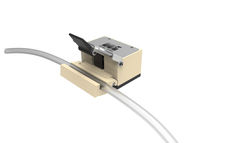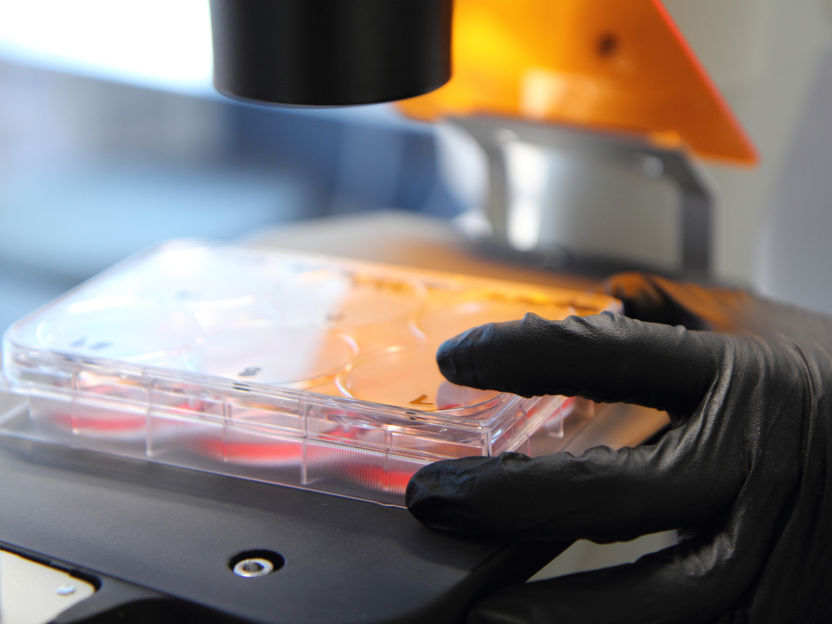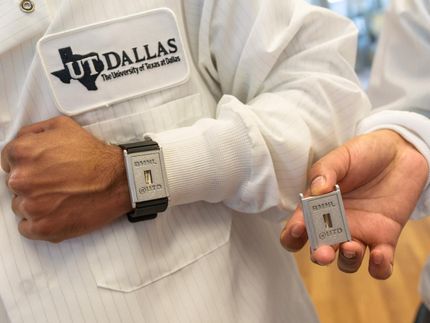Mini-fuel cell generates electricity using the body's sugar
Glucose energy source for medicinal implants and sensors
glucose is the most important energy source in the human body. Scientists at the Technical University of Munich (TUM) and the Massachusetts Institute of Technology (MIT) now want to use the body's sugar as an energy source for medicinal implants. They have developed a glucose fuel cell which converts sugar into electricity.

Prof. Jennifer Rupp and her team have developed a highly efficient glucose fuel cell.
Uli Benz / TUM; Kunstwerk: Christian Wichmann
Medicinal implants such as sensors for measuring vital functions, electrodes for Deep Brain Stimulation in treating Parkinson's disease and cardiac pacemakers all require power sources which are as reliable and as small as possible. But there are limits to how far battery size can be reduced, since batteries require a certain volume in order to be able to store energy.
A research team led by Jennifer Rupp, Professor for the chemistry of solid-state electrolytes at TUM and MIT's Dr. Philipp Simons have now developed a glucose fuel cell which is only 400 nanometers thick – one hundredth of the diameter of a human hair. "Instead of using a battery, which accounts for 90 percent of an implant's volume, our device can be mounted as a thin film on a silicon chip or perhaps in the future even on the surface of the implant itself," says Rupp.
Ceramics replace plastic
The glucose fuel cell consists of a cathode and an anode as well as an electrolyte layer. Glucose from the body is converted to gluconic acid at the anode, releasing protons. The electrolyte conducts these protons through the fuel cell to the cathode, where they recombinate with air to form water molecules. The electrons flow through an external electric circuit which can power an electronic device.
The idea of using glucose fuel cells as a power source is not new: Previous devices used a plastic electrolyte layer. "Since plastic materials are not compatible with common production processes in the semiconductor industry, it is difficult to apply them to silicon chips, which are state of the art in medical implants. Hard materials are needed for this," Simons explains. Another disadvantage of the plastic-based electrolytes: The polymers which made up the plastic were sometimes damaged when sterilizing the implants.
Consequently the researchers used ceramic electrolytes for their new fuel cell. The ceramic they chose is easy to miniaturize and integrate on a silicon chip and is bio-compatible. The material can also withstand high temperatures.
Highest power density ever
The team produced 150 of the glucose fuel cells on a chip, with each cell only 400 nanometers thick and about 300 micrometers wide. The researchers successfully mounted the cells on silicon wafers, proving that the devices could be combined with a conventional semiconductor material. Then they let a glucose solution flow over the wafer.
They found that many of the cells generated a peak voltage of approximately 80 millivolts, enough to power for example sensors and many other electronic devices for implants. Given the minuscule size of each cell, this is the highest-ever power density of any glucose fuel cell design to date.
"This is the first time that the proton conduction in electro-ceramic materials has successfully been used in converting glucose into electricity," says Rupp. In a next step the research team wants to help bring the discovery to long-term practical application.
Original publication
Other news from the department science
These products might interest you

Hose pressure transducer by HiTec Zang
Contactless pressure measurement for sterile applications
Easy-to-install tubing pressure sensors for diameters from 4.8-19.1 mm

FireSting-PRO by PyroScience
New fiber optic measuring device: Precise measurements even in the smallest volumes
Measure pH, oxygen and temperature even under sterile conditions

Get the life science industry in your inbox
By submitting this form you agree that LUMITOS AG will send you the newsletter(s) selected above by email. Your data will not be passed on to third parties. Your data will be stored and processed in accordance with our data protection regulations. LUMITOS may contact you by email for the purpose of advertising or market and opinion surveys. You can revoke your consent at any time without giving reasons to LUMITOS AG, Ernst-Augustin-Str. 2, 12489 Berlin, Germany or by e-mail at revoke@lumitos.com with effect for the future. In addition, each email contains a link to unsubscribe from the corresponding newsletter.
Most read news
More news from our other portals
Last viewed contents

Creating blood vessels on demand - Researchers discover new cell population that can help in regenerative processes
Cytena Founds Subsidiary in Taiwan

Cancer screening from home? - Detection with independently taken samples can work
Protein helps prevent damaged DNA in yeast
Cornell Chronicle: Leaf gene changes increase corn yield - Technique allows researchers to identify key maize genes for increased yield

Bayer invests USD 50 Million in eGenesis Series B financing round - Investment to support development of human-compatible xeno organs to address the global organ shortage crisis

Synthesis of pharmaceuticals with light
DIREVO Announces Incorporation of Industrial Biotechnology Subsidiary























































